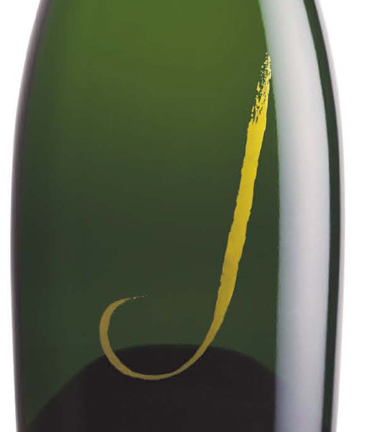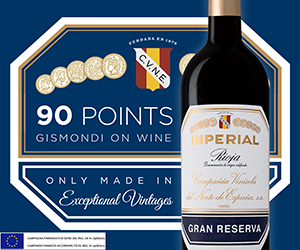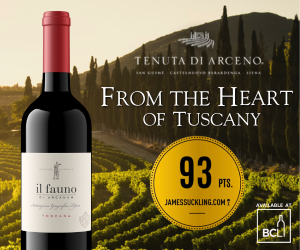If you want to know which of your friends is really into wine, check their refrigerator.

If you find a chilled bottle of sparkling wine just waiting to be opened for no particular reason, chances are they are wine freaks.
Some 30 years down the wine path, I'm still baffled by consumer resistance to drink sparkling wine on a regular basis. It's almost as if we dare not be seen consuming a product widely associated with "celebrating" something.
Confounding the issue is sparkling wine's extremely versatility to make almost any food taste better. Beyond that, it appears to have an innate ability to lift the spirit of the sipper -- something we could all use in a challenging economy. Okay, it's not as if I think you should drink to forget, but a glass or two of sparkling wine a couple of times per week should not be out of the realm of possibility.
Spanish and French consumers are both excellent role models when it comes to embracing bubble, no matter what the occasion. Could it be they know something we don't?
It need not take a lot of work to become a bubble expert. What you should focus on is where the wine is made and which technique is used to get the bubbles in the bottle. Champagne, the region, is the only place Champagne, the wine, can be made. All other bubbly versions should only be referred to as sparkling wine.
Spanish sparkling wine, easily identified worldwide as Cava, would be my daily choice. For the unaware, Cava is made in the same method as champagne (the second fermentation is inside the bottle thus creating the tiny bubbles). Although European Union rules prohibit Spain from using the French term méthode champenoise on its labels, look for the Spanish equivalent, método tradicional.
In France, non-champagne sparklers, or Crémant, are made in most areas although the most interesting and affordable usually come from Limoux and the Loire. The term Crémant is used across Europe to signal the wine is harvested by hand, aged for one year in bottle and, of course, that it is made using the méthode champenoise. If the wine is carbonated or made using other bulk methods, it is simply tagged Mousseux, which is French for sparkling wine.
In Germany, nearly all sparkling or Sekt are carbonated in huge tanks. In South Africa, Cap Classique designates sparkling wine made in the traditional French method and in Italy, Prosecco says it all as it describes the style of sparkling wine and the grape used to make it.
Remember, sparkling wine should be served chilled (5 to 6 C) but not frozen. Put the bottle in the refrigerator for 30 minutes or plunge the bottle into ice and water for 15 minutes. You can serve sparkling wine in any glass: from the classic tall, thin flute to the latest acceptable vessel, which is a standard wine glass. Many now believe the bigger, wider bowl enhances any well-crafted bubble.
Here are some ideal candidates.
The Pares Baltà Cava Brut B is now one of my go-to favourites. You will love its fresh, nutty, creamy, apple-skin aromas and its nutty, mineral, floral flavours. Sophisticated and clean, it works with most foods and the grapes are 100-per-cent organically grown.
Many of you will know the Blue Mountain Gold Label Brut N/ V, a blend of pinot noir, chardonnay and pinot gris, and its crisp nutty, lemon, stone fruit, pear and honey flavours. It is a delicate, more austere style built for food. Fine value.
Lucien Albrecht Crémant d'Alsace Brut Rose Crémant dazzles with its faint pink/coppery/salmon colour. Made from hand-picked Pinot Noir grapes, it delivers strawberry/ cranberry fruit flavours with plenty of zippy acidity and a whiff of minerality. Excellent for appetizers or sushi.
Similarly, the Segura Viudas Cava Brut Rose N/V consistently over-delivers for the price. Dry and fresh with nutty, cherry, baked pear and citrus flavours, it is the perfect tapas-style bubble. The blend is a mix of trepat, garnacha and monastrell.
Coming soon to B.C. and well worth looking for is the J Cuvee 20 Brut NV, a chardonnay, Pinot Noir, Pinot meunier from Russian River. The style is fresh and crisp but with enough fruit and nutty, floral, citrus notes to give it wide appeal.
We finish with Tranchero Casot Moscato d'Asti 2009 from Piedmont. This off-dry, delicate sparkler with peach, nectarine and honey aromas is about as swish as it gets for dessert.
Remember, shaking the bottle and expelling the cork across the room may look good in the movies but it's best to grasp the cork in one hand and rotate the bottle with the other until the cork gently and quietly slides out. After that, it's up to you to make your own fun.
WINES THAT SPARKLE
Pares Baltà Cava Brut B N/V, Penedès, Catalunya, Spain
Price: $20
UPC: 8410439034354
Score: 89/100
Remarks: Consistently fine value and made with organic grapes.
Blue Mountain Gold Label Brut N/V, Okanagan Falls, Okanagan Valley
Price: $24
UPC: 00626452041066
Score: 89/100
Remarks: A delicate, more austere style with lots of citrus and apple fruits.
Lucien Albrecht Crémant d'Alsace Brut Rose N/V, Alsace, France
Price: $25
UPC: 03471952318005
Score: 89/100
Remarks: Hand-picked Pinot Noir grapes with strawberry/cranberry fruit flavours.
Segura Viudas Cava Brut Rosado N/V, Penedès, Catalunya, Spain
Price: $16
UPC: 00033293640004
Score: 88/100
Remarks: Fresh with nutty, cherry, baked pear and citrus flavours.
J Cuvee 20 Brut N/V, Russian River, Sonoma County, California
Price: $30
UPC: NA
Score: 89/100
Remarks: Finesse, fruit and fine value.
Tranchero Casot Moscato d'Asti 2009, Piedmont, Italy
Price: $20
UPC: 00335096910378
Score: 90/100
Remarks: A delicate, sweetish dessert style. Or, try with spicy Indian foods.

 quicksearch
quicksearch





